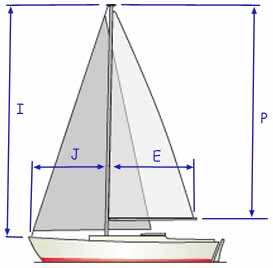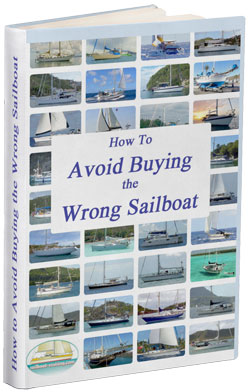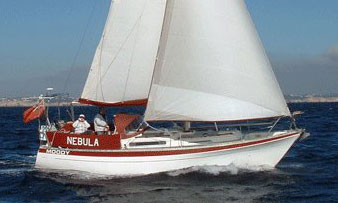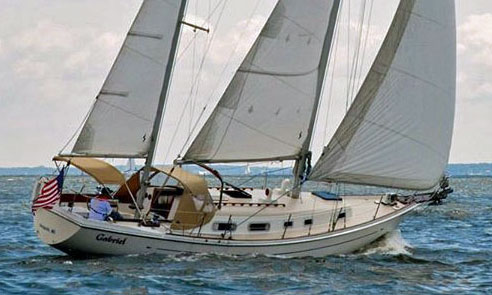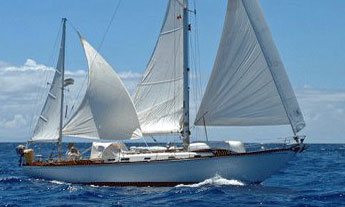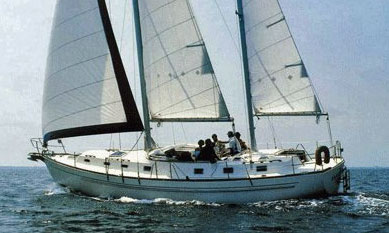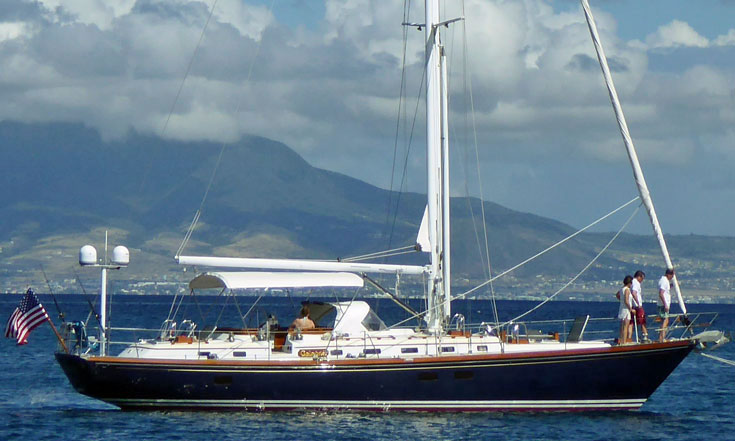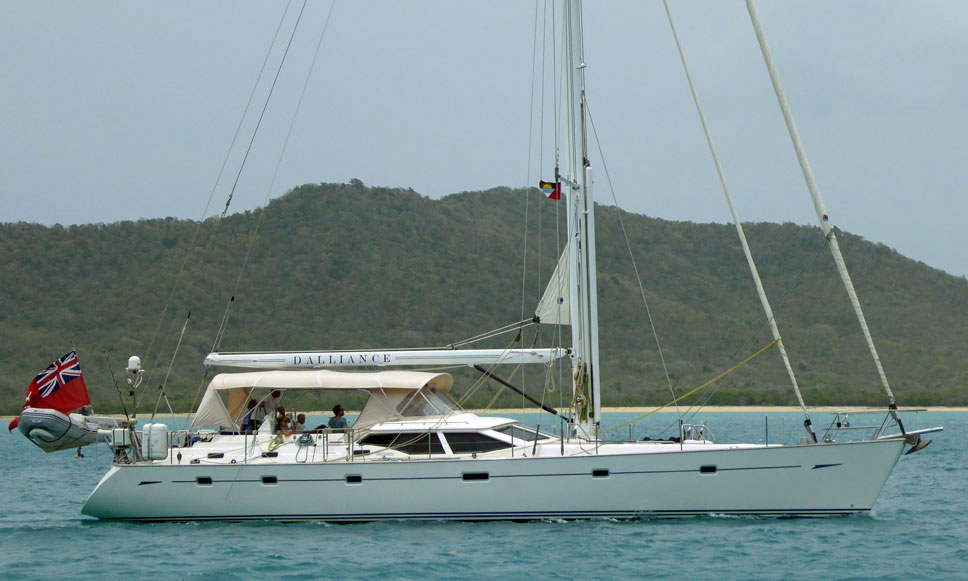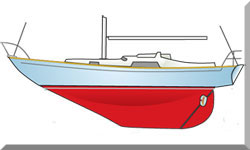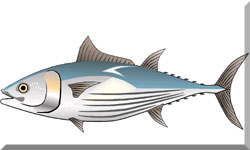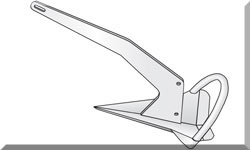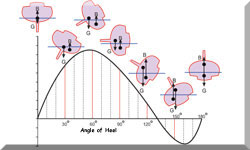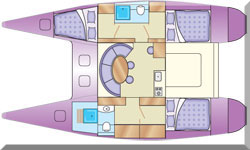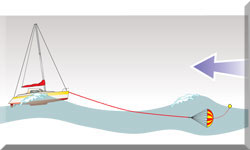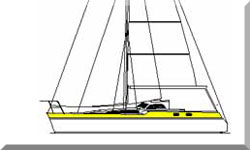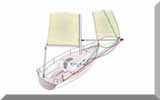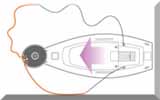- Home
- Cruising Yachts 40' to 45'
- Hinckley Souwester 42
The Hinckley Souwester 42 Sailboat
Specs & Key Performance Indicators
The Hinckley Souwester 42 sailboat was designed by McCurdy & Rhodes and manufactured by Hinckley Yachts in the United States throughout the years 1982 to 2006.
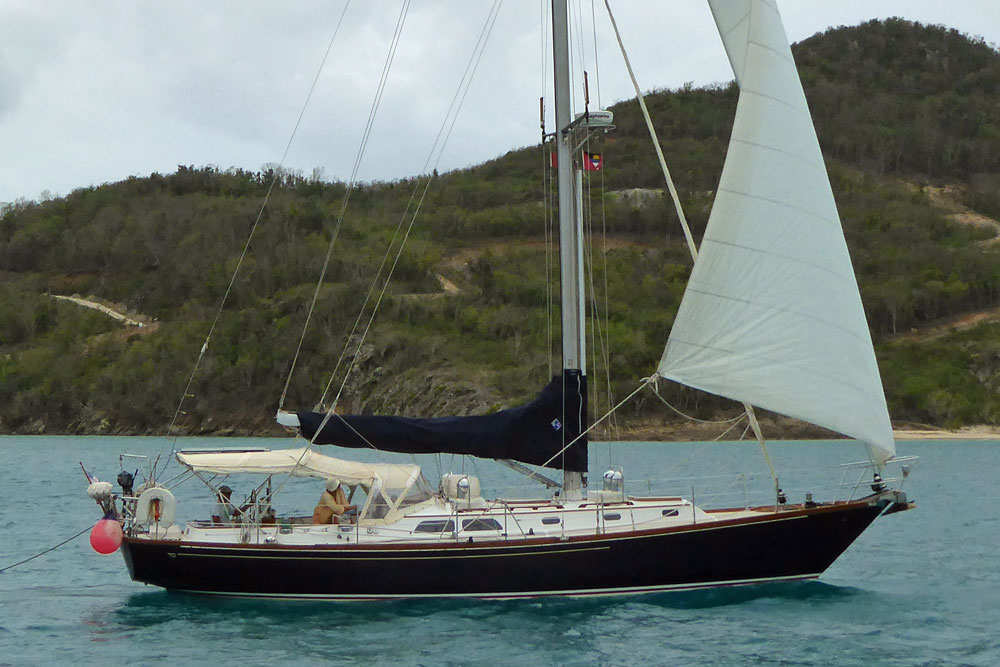 A Hinckley Sou'wester MkII sailboat. This one is a cutter, but others were produced as masthead sloops.
A Hinckley Sou'wester MkII sailboat. This one is a cutter, but others were produced as masthead sloops.Published Specification for the Hinckley Souwester 42
- Keel & Rudder Configuration: Fin keel with a skeg-mounted rudder, though variations exist.
- Hull Material: Hand-laid fibreglass, often cored with Airex foam for additional strength and insulation.
- Length Overall*: 42'9" (13.03 metres)
- Waterline Length*: 31'3" (9.53 metres)
- Beam*: 12'6" (3.81 metres)
- Draft*: 7'0" (2.13 metres) with standard keel, but shoal draft options as low as 5'0" (1.52 metres) and a centreboard option with a maximum draft of 9'1" (2.77 metres) were available.
- Rig Type: Masthead Sloop (Bermuda rig).
- Displacement*: 24,000 lbs (10,886 kg)
- Ballast*: 8,500 lbs (3,856 kg)
- Sail Area (main plus 100% foretriangle)*: 817.00 ft² (75.90 m²)
- Water Tank Capacity: 150 gallons (567.81 litres) or 160 gallons (605.67 litres).
- Fuel Tank Capacity: 60 gallons (227.12 litres) or 55 gallons.
- Hull Speed: 7.49 knots (calculated)
- Designer: McCurdy & Rhodes
- Builder: Hinckley Yachts
- Year First Built: 1982
- Year Last Built: 2006
- Number Built: 46
* Used to derive the design ratios referred to later in this article - here's how they're calculated...
Options & Alternatives
Design Options:
- Rig Type: The primary rig type was a masthead sloop (Bermuda rig) or cutter.
- Deep or Shallow Draft: Buyers had options for draft, including a standard deep fin keel (around 7'0" / 2.13 metres) and a shoal draft version (around 5'0" / 1.52 metres). A centreboard option was also available, allowing for a variable draft up to 9'1" (2.77 metres).
- Interior Layouts: While a "standard" layout sleeping up to seven existed, details could vary significantly as the boats were often built on a custom basis. Common features included a V-berth forward, a head accessible from both the forward cabin and main salon, a main salon with pull-out settee berths and pilot berths, a drop-leaf table, and a U-shaped galley. Interior finishes, such as varnished mahogany or ash, were also options.
Later Versions: Yes, later versions of the Hinckley Sou'wester 42 sailboat were produced. The most notable was the Hinckley Sou'wester 42 MkII, also sometimes referred to as the Hinckley Sou'wester 43.
Essential differences between the original and the MkII/43 version include:
- Introduction: The MkII version was introduced in 1995.
- Modifications: The MkII had modifications to the keel, rudder, transom, and interior layout.
- Length: The MkII version had a slightly longer waterline length and overall length compared to the original version, which contributed to some being designated as "43s."
Sail Areas & Rig Dimensions
Sail Areas
- Sail Area Fore (100% foretriangle): 474.69 ft² (44.10 m²)
- Sail Area Main: 342.56 ft² (31.82 m²)
Rig Dimensions
- I (foretriangle height): 54'3" (16.54 metres)
- J (foretriangle base): 17'6" (5.33 metres)
- P (mainsail luff length): 47'3" (14.40 metres)
- E (mainsail foot length): 14'6" (4.42 metres)
Published Design Ratios
The Key Performance Indicators (KPIs)
Sail Area/Displacement (SA/D): 15.77
Ballast/Displacement (B/D): 35.42%
Displacement/Length (D/L): 351.09
Comfort Ratio: 36.99
Capsize Screening Formula: 1.74
S# (Speed/Length Ratio): 1.32
Theoretical Sailing Characteristics
The design ratios suggest the Hinckley Sou'wester 42 is a very stable, comfortable, and seaworthy offshore cruising sailboat with respectable performance.
- Sail Area/Displacement (15.77): This mid-range ratio suggests a moderately performing cruiser, capable of moving well in various wind conditions without being a dedicated racer. It indicates a balanced design for comfortable cruising with reasonable speed.
- Ballast/Displacement (35.42%): A respectable ratio for a cruiser, this indicates good initial stability and resistance to heeling, contributing to a comfortable ride even in choppier conditions.
- Displacement/Length (351.09): This places the Sou'wester 42 in the "heavy displacement" category, implying a robust build, comfort offshore, and good carrying capacity. It suggests a steady motion through waves and good directional stability, though it will require more wind to reach hull speed and accelerate slower than lighter vessels.
- Comfort Ratio (36.99): A high ratio, suggesting the Hinckley Sou'wester 42 offers a very comfortable ride in a seaway, aligning with its heavy displacement and offshore cruising design.
- Capsize Screening Formula (1.74): Well below the 2.0 offshore threshold, this indicates high resistance to capsize, a significant safety feature for challenging conditions.
- S# (1.32): This indicates the Hinckley Sou'wester 42 is likely to achieve its theoretical hull speed efficiently, suggesting consistent performance once up to speed.
But the Design Ratios are Not the Whole Story...
While design ratios offer a useful theoretical framework, they have several limitations when defining a sailboat's detailed actual sailing performance:
- Simplification of Complex Hydrodynamics and Aerodynamics: Ratios reduce complex interactions of hull, keel, rudder, and sails with water and wind into single numbers, overlooking nuances of hull shapes, keel profiles, or rudder designs that significantly impact performance, manoeuvrability, and upwind ability.
- Ignores Rig Details and Sail Plans: The SA/D ratio does not differentiate between masthead and fractional rigs, the presence of spinnakers, or the overall efficiency of the sail plan across different wind angles.
- Does Not Account for Construction Quality and Finish: Build quality, hull stiffness, fairing of components, and overall finish critically impact performance, often more than ratios alone suggest.
- Assumes Ideal Conditions: Ratios are based on static measurements and don't factor in dynamic elements like waves, current, or wind shifts.
- Lack of Detail on Steering and Handling: Ratios don't describe helm balance, responsiveness, or ease of tacking and gybing, which are crucial aspects of how a boat feels to sail.
- Does Not Consider Crew Skill or Trim: Actual performance is highly dependent on the crew's ability to properly trim sails and balance the boat.
- Limited for Multihulls: Some ratios, like the Capsize Screening Formula, are primarily for monohulls and not applicable to multihulls.
- Evolution of Design: Ratios are based on historical observations; their interpretation may need adjustment with advancements in naval architecture and new technologies.
In essence, design ratios are a good starting point for high-level comparisons but cannot replace a comprehensive understanding of naval architecture, real-world testing, or the specific design intentions of a vessel.
More Specs & Key Performance Indicators for Popular Cruising Boats
Recent Articles
-
Albin Ballad Sailboat: Specs, Design, & Sailing Characteristics
Jul 09, 25 05:03 PM
Explore the Albin Ballad 30: detailed specs, design, sailing characteristics, and why this Swedish classic is a popular cruiser-racer. -
The Hinckley 48 Sailboat
Jul 09, 25 02:44 PM
Sailing characteristics & performance predictions, pics, specifications, dimensions and those all-important design ratios for the Hinckley 48 sailboat... -
The Hinckley Souwester 42 Sailboat
Jul 09, 25 02:05 PM
Sailing characteristics and performance predictions, pics, specifications, dimensions and those all-important design ratios for the Hinckley Souwester 42 sailboat...
